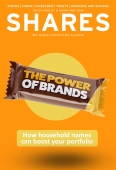Archived article
Please note that tax, investment, pension and ISA rules can change and the information and any views contained in this article may now be inaccurate.
Is it really time to pile into private equity?

They say that mood follows price, and in this respect, it is easy to see why private markets, and private equity in particular, are garnering so much attention, from Downing Street downwards. Even as the FTSE 100 crosses the 9,000 mark for the first time and flirts with new all-time highs, the capital return from the UK’s leading index over the past five years is 50%. By contrast, the S&P 500 Listed Private Equity Index has ripped higher by more than 130%.
Granted, the FTSE 100 has been a happy hunting ground for income seekers over that time, and the total return is far more pleasing. The ‘Leeds Reforms’ proposed by chancellor Rachel Reeves do focus on public markets, as part of a wider plan to promote investment, deregulate and boost overall economic growth, but the bigger changes may lie in the prospect of permitting greater access to private markets, especially for retail investors.
The idea is that retail investors will be able to buy Long-Term Asset Funds, open-ended funds that offer exposure to long-term private markets, including private credit and private equity. The question now is whether this is an opportunity to embraced or spurned.
Track record
Again, the performance of private equity asset class explains why it looks such a beguiling option and potential portfolio diversifier beyond the standard options of equities, fixed income, commodities, property and cash.
The S&P Listed Private Equity index is a good benchmark for that, and it shows how investors can get access to the asset class through some of the index’s constituents, including Brookfield (BN:TSX), Blackstone (BN:NYSE), KKR (KKR:NYSE), EQT (EQT:ST) and the UK’s very own 3i (III), should they feel they fit with their overall strategy, target returns, time horizon and risk appetite.
And there are risks to consider, including the following:
1. Private equity is an inherently illiquid asset class. It is not easy to buy and sell whole businesses quickly. The funds offer limited windows for redemption, if any at all, and involved lengthy holding periods as a result. It seems odd for there be a stampede in this direction when a lot of the fall-out from the Woodford funds farrago surrounded the issue of liquidity and the needs for retail-oriented investment products to provide it.
2. Private equity is long only. The funds own companies. It just happens to be all of them rather than a shareholding. In the event of a market or economic dislocation, they cannot go short or hedge. Given the use of debt, they are in some ways a leveraged play, even allowing for the diversification provided by the range of companies and assets within their portfolios. What was the largest ever private equity deal at the time, 2007’s $45 billion swoop for the Texan power utility TXU led by KKR and TPG, ended in disaster. The Great Financial Crisis hit home shortly after, to warn of the dangers of illiquidity, opacity and leverage. TXU itself went bankrupt in 2014, crushed by the debts shovelled on to it as part of the leveraged buyout.
3. The lack of liquidity can mean there is also little immediate transparency on asset valuations. Private equity firms are not obliged to mark their assets to market in the way that a vanilla equity or fixed-income fund, investment trust or tracker would be.
4. The relatively limited number of initial public offerings on global stock markets means it is currently difficult for private equity to sell and realise gains. There is a danger that newfound buyers of the asset class could simply be providing exit liquidity to shrewd sellers
5. Most pressingly, private equity as an asset class has already done well, for five, ten years or more. To expect it to do as well in the next five or 10 years is therefore inherently a bold assumption (and a reflection of how mood follows price), not least because valuations are higher, particularly for the assets they wish to buy. This takes us back to the TXU example, struck just as a bull market was about to give way to a bear one.
This final point is particularly pertinent because the environment is now different from the one in which private equity’s strong, historic returns lie. Private equity’s use of debt to leverage returns looks great when interest rates are zero, but perhaps less so now benchmark borrowing costs are something vaguely akin to ‘normal.’
Numbers game
The debt piled onto acquired businesses now comes with a cost and could start to smother them, as the interest bills suck away cash that could otherwise be used to invest in the competitive position of the acquired company. A couple of UK supermarkets could be potential examples of this, after the acquisitions of Morrisons and Asda, as Aldi and Lidl (not to mention Tesco (TSCO)) continue to eat their lunch.
Falling interest rates could yet provide a fresh tailwind for private equity so it may not pay to be too cynical. An onrush of inflation, thanks to the Trump growth agenda of a lower energy prices, lower interest rates, lower energy prices, lower direct taxes and deregulation, coupled with central banks keeping borrowing costs down, could force investors to spurn cash and seek multiple hide-outs, including the real assets and businesses owned by private equity. But in that instance, portfolio builders may have to bear in mind the Swiss investor and publisher Marc Faber’s dark assertion that: ‘When things are really broken, the price of everything goes up.’
Important information:
These articles are provided by Shares magazine which is published by AJ Bell Media, a part of AJ Bell. Shares is not written by AJ Bell.
Shares is provided for your general information and use and is not a personal recommendation to invest. It is not intended to be relied upon by you in making or not making any investment decisions. The investments referred to in these articles will not be suitable for all investors. If in doubt please seek appropriate independent financial advice.
Investors acting on the information in these articles do so at their own risk and AJ Bell Media and its staff do not accept liability for losses suffered by investors as a result of their investment decisions.
 magazine
magazine








